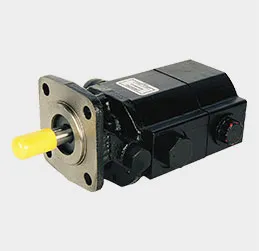Innovations in Vacuum Sand Casting Techniques for Enhanced Precision and Efficiency
Vacuum Sand Casting A Modern Approach to Metal Casting
Vacuum sand casting is an innovative and efficient method of producing metal components with high precision and excellent surface finish. This casting technique combines traditional sand casting methods with the benefits of a vacuum environment, resulting in several advantages that make it increasingly popular in various industries, including automotive, aerospace, and consumer goods.
Understanding Vacuum Sand Casting
The vacuum sand casting process begins with the preparation of a sand mold, which is typically made of a mixture of sand and a binding agent. In traditional sand casting, the mold is often subject to atmospheric pressure, which can lead to defects such as gas porosity and inclusions in the final cast product. Vacuum sand casting, however, mitigates these issues by creating a vacuum inside the mold cavity before the molten metal is poured.
By eliminating the air trapped in the mold, vacuum sand casting reduces the likelihood of gas entrapment and allows for a more cohesive flow of the molten metal. This results in a cleaner casting with fewer imperfections, enhancing the mechanical properties of the final product.
Advantages of Vacuum Sand Casting
1. Improved Surface Finish One of the most notable benefits of vacuum sand casting is the superior surface finish it provides. The vacuum environment minimizes the formation of defects, allowing for smoother and more aesthetically pleasing castings, which can reduce or eliminate the need for extensive post-processing.
2. High Dimensional Accuracy Vacuum sand casting offers improved dimensional accuracy compared to traditional methods. The controlled environment ensures that the metal solidifies uniformly, resulting in components that meet tight tolerances and specifications.
vacuum sand casting

3. Reduced Porosity The vacuum action effectively reduces the amount of gas present in the mold, significantly lowering the chances of gas porosity. This is particularly important in applications where the integrity of the metal is paramount, such as in aerospace and automotive parts.
4. Better Material Utilization The process allows for optimized metal flow and better mold filling, which translates into increased material utilization. This can lead to less scrap material and lower costs for manufacturers.
5. Versatility Vacuum sand casting can be employed with a variety of metals, including aluminum, magnesium, and iron alloys. This versatility makes it suitable for producing a broad range of components, from intricate parts to larger structural pieces.
Applications of Vacuum Sand Casting
Due to its numerous advantages, vacuum sand casting is employed in various sectors. In the aerospace industry, where weight and strength are critical, components such as turbine housings and brackets benefit from the improved properties provided by this casting method. The automotive industry also takes advantage of vacuum sand casting for producing engine blocks, transmission cases, and other critical components that require precision and reliability.
Moreover, vacuum sand casting is used in the production of consumer goods, jewelry, and even art pieces. Its ability to produce complex shapes with fine details makes it an attractive option for designers and artists looking to push the boundaries of metalwork.
Conclusion
Vacuum sand casting represents a significant advancement in the field of metal casting, marrying traditional techniques with modern technology to deliver a superior product. Its ability to reduce defects, improve surface finishes, and enhance dimensional accuracy makes it an invaluable method for manufacturers seeking to produce high-quality components efficiently. As industries continue to demand better performance and reliability from their products, vacuum sand casting will undoubtedly play a pivotal role in meeting those challenges and shaping the future of metal casting. Whether for high-performance aerospace components or intricate consumer goods, vacuum sand casting stands as a testament to the evolution of manufacturing technologies.
-
Aluminium Pressure Die Casting High-Precision & Durable Solutions for Complex PartsNewsJul.08,2025
-
Top Aluminum Sand Castings Manufacturer – Precision Green Sand Castings for Industrial NeedsNewsJul.08,2025
-
Precision Lost Wax Casting Quotes – High Accuracy Custom Parts Lost Wax Precision Casting ServicesNewsJul.07,2025
-
High-Quality Sand Used for Casting - Superior Sand for Sand Casting ProcessesNewsJul.07,2025
-
China Supply High End Metal Stamping Parts Sino - Precision Manufacturing FactoryNewsJul.06,2025
-
High-Quality Automotive Investment Casting Services Precision & Sand Casting SolutionsNewsJul.06,2025















